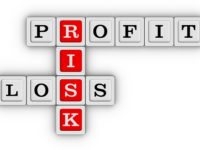Though it may be one thing to teach people the art of innovation, or at least provide some tools that may assist in the creation of new ideas, turning them into money, which is generally the aim of innovation, is far more difficult than people may think.
A brilliant solution that solves a well-known problem is just one tiny step in the commercialisation process, a process that can be steeped in mystic and roadblocks that may seem unimaginable.
Perhaps the most often cited example is the idea of a water-powered internal combustion engine. An invention supposedly purchased by the oil cartels and buried forever. Of course, though this may be untrue, it is certainly a behavioural model by powerful interest groups that could be forgiven.
Teach me commercialisation – really?
Some years ago we were invited to meet with a very large organisation. We attended the meeting and were flawed with the naivety of the opening statement and request. Note a request, not a question.
It went like this: “We are developing a new product, teach us commercialisation”
After explaining that is was not quite as simple as a bit of training and away you go, much like passing a driving test, the meeting broke up. We never heard from them again and after many years, I have yet to see their product on the market.
It all about strategy
The old saying, “build a better mousetrap and the world will beat a path to your door” is nonsense. Some of the most unbelievable products seem to make it, whereas others fail for reasons often hard to understand.
Pet Rocks, a nonsense product sold at ridiculous prices were huge many years ago. Pre-aged and torn clothing and jeans is another example of a mind-boggling success story.
Maybe these were marketed to success, but that’s a very high cost and risky strategy that failed to work for many products. The Edsel Ford car of the 1950s heralded for great success and one of the most widely marketed product in history was a notable failure.
The reasons some products have failed seem truly remarkable:
- An electrical safety product that would definitely reduce fires in commercial buildings was shunned because selling it would reduce the company’s replacement parts market.
- Frozen good labels to alert if the product had been thawed and refrozen shunned because it may expose weaknesses in the cold chain.
- The Concord, a revolution in air travel was rendered largely unprofitable because it was prevented from flying supersonic across the USA to LA. One wonders if this ban was on the back of Boeing’s failure to complete their much larger version of the Concord. In fact, overflying the USA at supersonic speed was banned by the FAA soon after the US Government stopped funding BOEING development efforts. Perhaps it was seen as too expensive, too ambitious and maybe unachievable at the time. Was this a coincidence or a plan?
What’s the message?
There are just too many variables, technical, political, business and personalities that are part of the commercialisation mix with even the simplest of products.
The purpose of this blog is to remind readers that a strategic approach to commercialisation is as important as the products itself, you don’t learn that from a textbook.
Experience is the best teacher
Our definition of experience is: “We have been there before and can predict the likely outcome”.
The Dictionary definition: “Direct observation of or participation in events as a basis of knowledge”
Remember, forearmed is forewarned.
Roger La Salle, www.innovationtraining.com.au
















